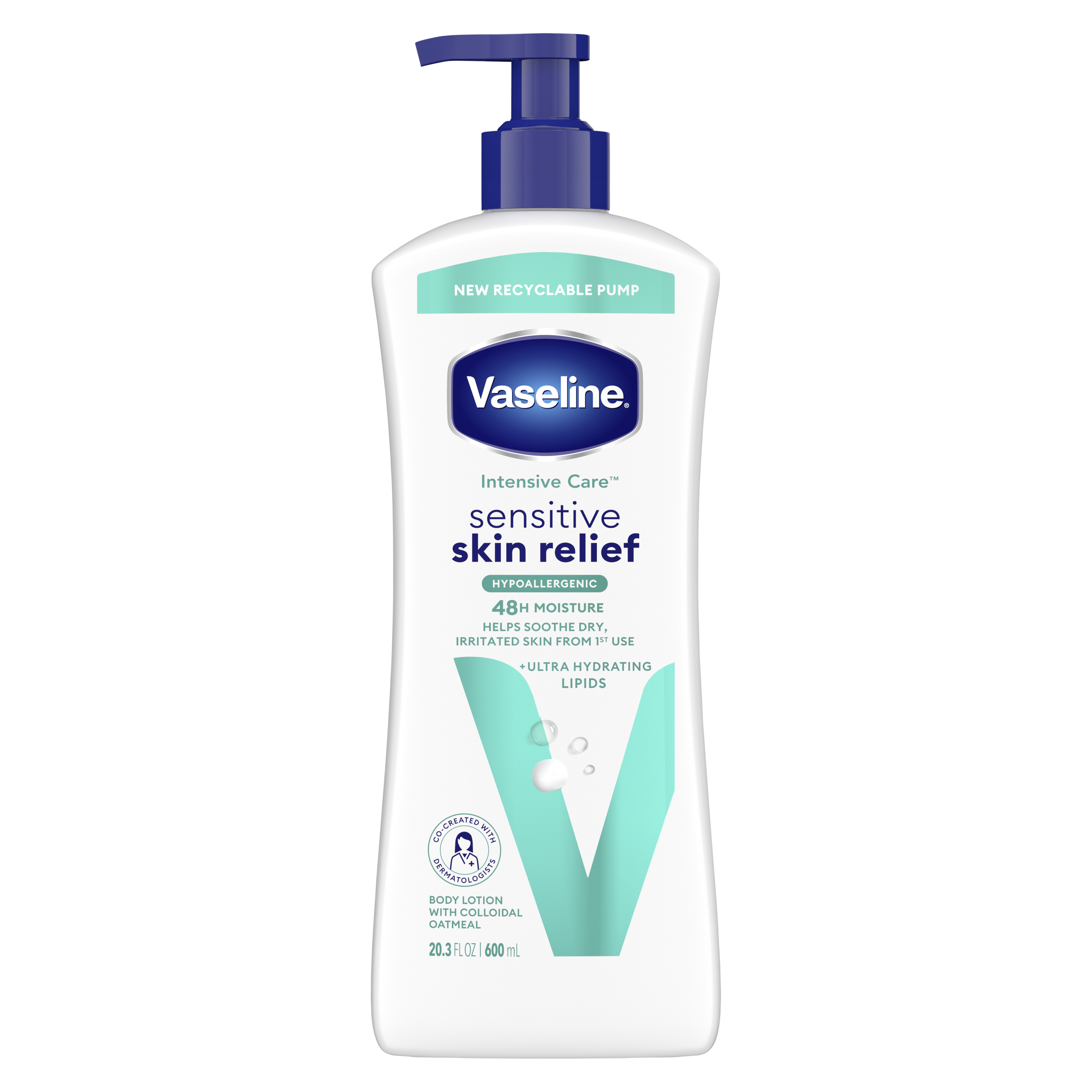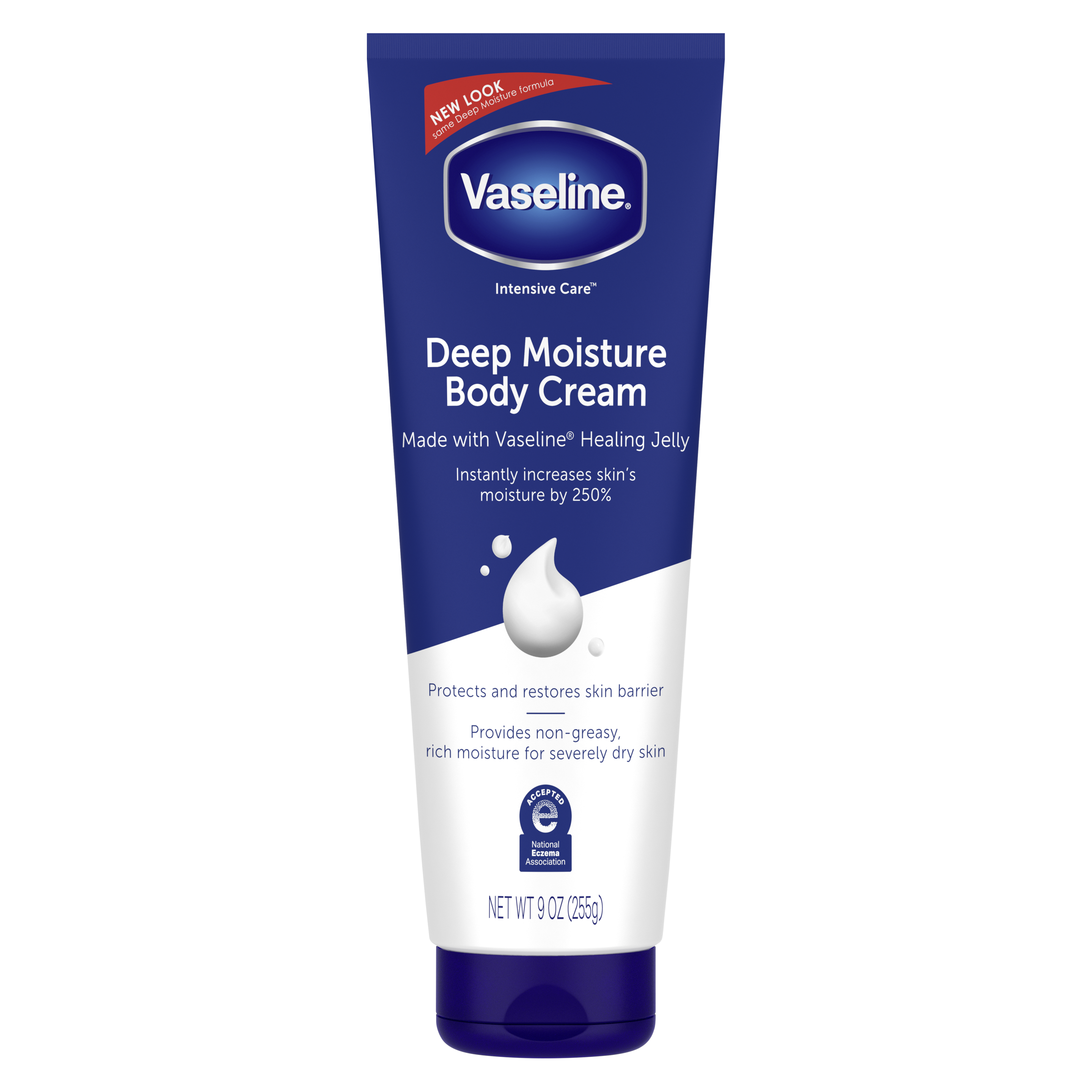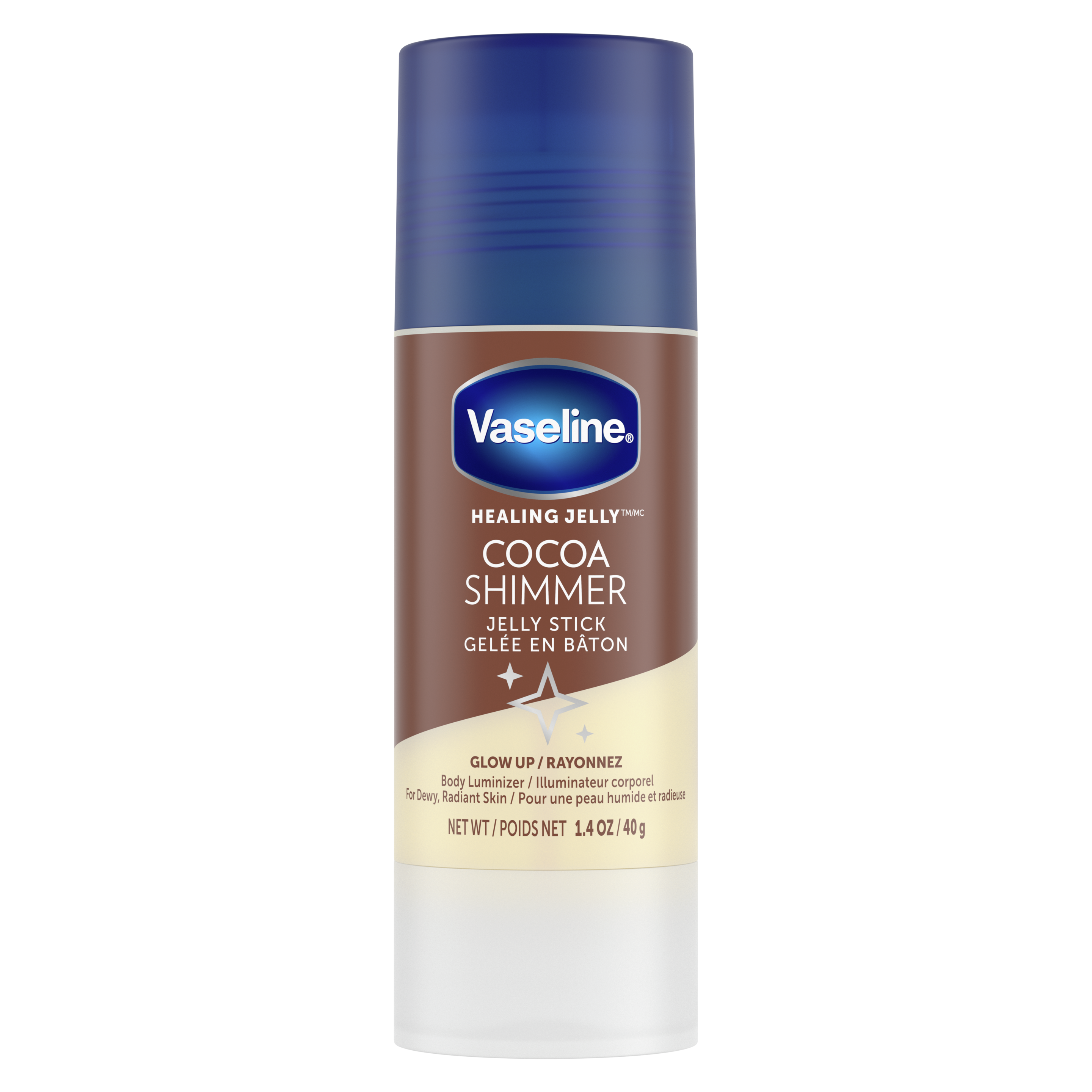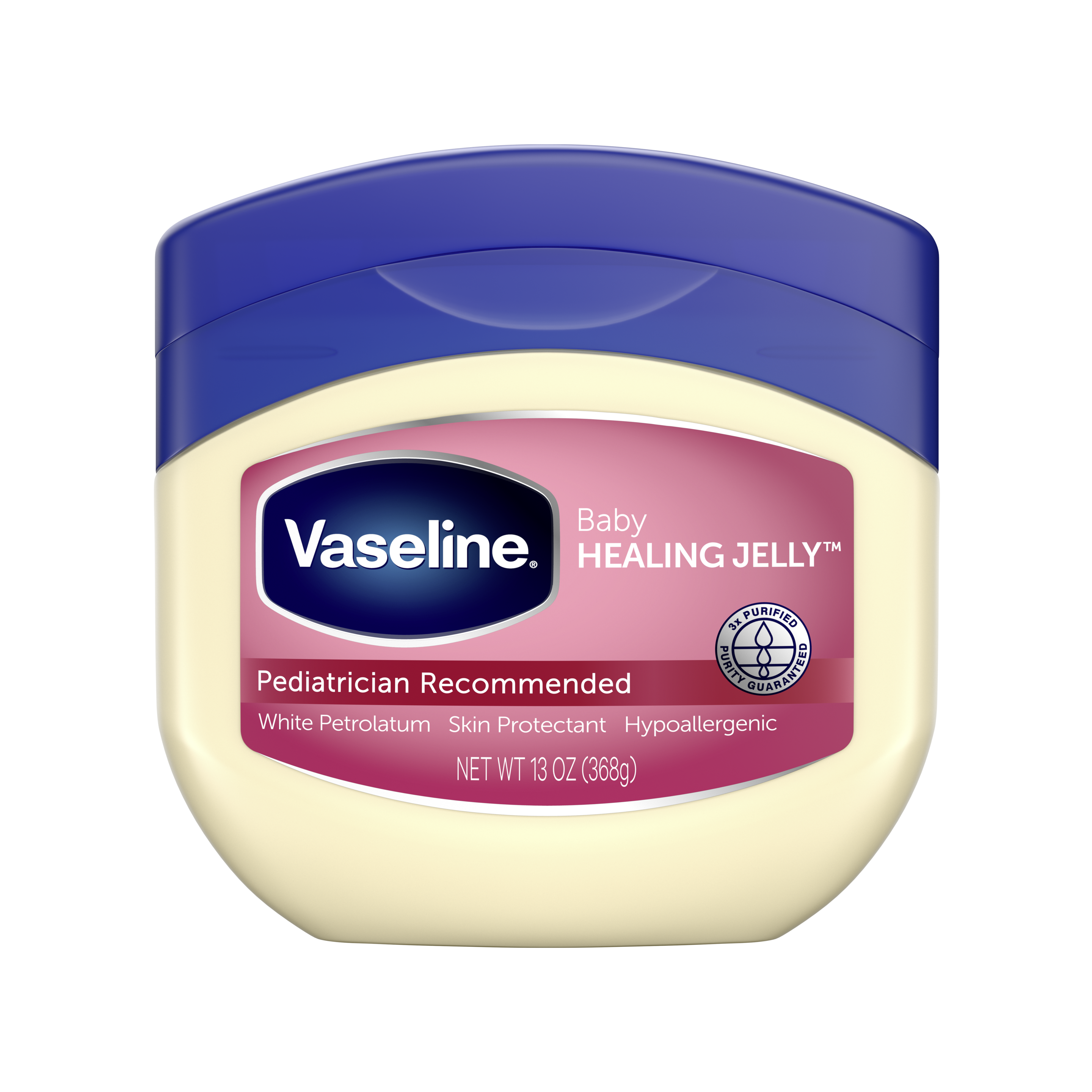Skip to content
If you’ve been asking yourself: “Why do my ears have dry skin?”, you’ve come to the right place. Dry ear skin can be caused by anything from a lack of moisture in the air to certain skin conditions. Like any dry skin, it can be irritating and distracting as you go about your day, and can sometimes lead to redness, flakiness, and itchiness. But the good news is, in most cases, it’s easily dealt with.
Read on to discover what causes dry skin in the ear and the essential Vaseline® products that can help soothe and hydrate it.
Why do I have dry skin in my ear and what causes it?
Whether it’s around your ears or inside of them, there are many different reasons why you may develop dry ear skin. Here are some of the most common causes:
Environmental factors
The weather can dry out your ears — and believe it or not, this can happen all year round. When temperatures plummet, the air outside holds less moisture, and cranking up the central heating does the same thing to the air indoors. Our skin tends to mimic the moisture levels in the air around us, and as our ears are often exposed, they can be easy targets. Think about that the next time you rush out of the house in winter without a warm hat!
Similarly, too much sun exposure can lead to dry, itchy skin in the ear and around it — especially as many of us forget to apply sunscreen here. This is because UV rays can damage your skin over time, and this can lead to the condition actinic keratosis, which causes dry, scaly skin.
Aging
As you age, your skin produces less sebum — an oil that softens skin — making you more susceptible to dry ear skin. And it’s not just the ears that experience dryness as you age – the American Academy of Dermatology Association states that by the age of 60, nearly everyone has dry skin.
Dry ear skin conditions
- Eczema
Ear eczema is an irritating and sometimes painful skin condition that can occur in the ear canal and on the outside of your ear. Symptoms can vary from slight dryness to severe skin loss or infection. There are a few different types of eczema that can affect your ears, including:
- Atopic eczema — causing dry, itchy, and red / darker ear skin (usually between the earlobe and face), which can easily become infected.
- Asteatotic eczema — a type of eczema that affects older people, causing dry, scaly, and itchy ear skin.
- Contact dermatitis — caused by irritants or allergens, like shampoo, hair gel, earrings, objects used to clean the ears, etc.
- Otitis externa — aka Swimmer's ear, which can cause earache, swelling, itching, and discharge from the inner ear.
- Seborrheic dermatitis
Another type of eczema, seborrheic dermatitis is an inflammatory skin condition that results in white or yellow crusty skin in the inner ear and behind the ear. It’s thought to be triggered by the immune system overreacting to an overgrowth of a harmless type of yeast that lives on the skin called malassezia.
It usually occurs in people who also have scalp dandruff and flaky, itchy skin along the smile lines and eyebrows, on their chest, and sometimes their eyelids.
- Psoriasis
Psoriasis is an autoimmune disorder that affects more than 3% of the US adult population. It causes the immune system to become overactive, speeding up skin cell growth on the face, body, scalp, ears, and other parts of the body. Normally, skin cells grow and shed on a monthly cycle, but with psoriasis, it takes just three or four days. The skin piles up on the surface of the skin, causing plaques and scales.
When to seek medical help
It’s important to talk to a healthcare professional, dermatologist, or doctor if you experience any of the following:
- Recurring dry skin on ears or itchiness that won’t go away with home remedies or over-the-counter medications.
- Dry patches that develop crusts, become painful, or start filling with blood, fluid, or pus.
- Ear eczema symptoms such as swelling, redness or a change in skin tone, itchiness, and discharge coming from inside the ear.
How to get rid of dry skin in ears
How can I get rid of dry ear skin at home?
Here are some tips and tricks you can do at home to prevent dry skin in and around the ears:
Create an ear-friendly skincare routine
Your soothing skincare regime for dry ear skin starts here. First, gently wash your ears, either with a cotton pad or in the shower (making sure the water is warm). Dr. Gohara recommends limiting your showers to 5-8 minutes and drying your skin thoroughly afterward.
Next, apply a small dollop of Vaseline® Healing Jelly Original on the outer areas of your ears with a cotton bud. This hypoallergenic jelly has been awarded the US National Eczema Association Seal of Acceptance, so you can rest assured that it treats your symptoms of sensitive skin and dryness as you go about your day.
Want a convenient way to top up that moisture while you’re out and about? Try Vaseline® All-Over Body Balm Jelly Stick. You can reapply it 2-3 times a day, even if you’re on the go — simply glide this portable, mess-proof stick over the dry areas of your ear to help restore and heal your skin.
Next up: Moisturizer and lotion
Once you’ve hydrated your ear skin with one of our Jelly products mentioned above, it’s time to start moisturizing every day to help keep the dryness away.
“Well moisturized skin is healthy skin,” says dermatologist, Dr. Mona Gohara. She recommends applying a lotion, cream, or oil to combat dry skin, especially in those ice-cold winter months. These work to rehydrate the top layer of your skin and seal in moisture, helping to restore your ear skin.
To moisturize dry skin in the outer ear, try Vaseline® Intensive Care™ Sensitive Skin Relief, a body lotion containing colloidal oatmeal and ultra-hydrating lipids that provide 88% more moisture compared to untreated skin. For maximum impact, apply it throughout the day, as well as after you bathe or shower (when your skin is moist) — just a little goes a long way.
Can you put lotion inside your ears?
While it’s safe to apply moisturizing cream like Vaseline® Intensive Care™ Deep Moisture Body Cream to the bowl of the ear, ear lobe, and top of the ear with a cotton bud, never apply it into your ear canal — dryness here is treated with medicinal products recommended by a pharmacist, dermatologist or doctor.
Protect yourself from the weather
Simple lifestyle shifts can help treat dry skin in ears, whatever the weather. Remember to apply sunscreen with SPF 30 around your ears to stop them from peeling and getting dry — remember, UV radiation is always present and can still impact your skin in the winter months.
Wearing a warm hat also protects the skin around your ears from cold temperatures that can lead to dryness. Plus, Dr. Gohara recommends using a humidifier at home to moisturize the dry air caused by central heating.
Alternative over-the-counter options
If you can’t treat the dry skin in your ears effectively at home, it may be time to try some alternative over-the-counter products.
Don’t overlook dry skin on ears and always seek advice if you notice any symptoms that look out of the ordinary.
We often neglect areas such as our ears when it comes to dryness, so ensure you're giving them the same attention as the rest of your body. Don't forget to include your ears in your daily moisturizing routine, protect your skin from changing temperatures, and visit a professional if a skin condition arises.
These articles provide general tips and information about improving skin health. They have been written by health and beauty writers. They have not been written by health care professionals and, as such, don’t constitute medical advice. If you have a serious skin condition, please consult a medical professional.
Related Products
- slide 1
- slide 2
- slide 3
- slide 4
- slide 5














